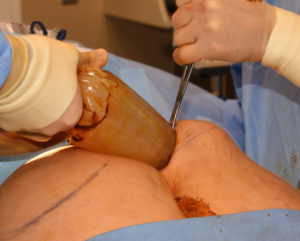Of all body implant augmentations buttock implants are the most challenging in many ways. From the dissection of the implant pocket to the patient’s recovery, such buttock augmentations requites a complex interplay of many factors to go well for a successful outcome.
One of the essential intraoperative factors is getting the buttock implants into the dissected pocket. This seems like a trivial maneuver to those who have never seen the surgery, but given the size of the implant vs the the linear length of the incision this can look daunting. This is not an uncommon observation about almost all face and body implants which is why deformability of the implant is a critical characteristic of its material.
All buttocks implants are made of a solid but very soft silicone material of which is fairly deformable. Breast implants are even softer and more deformable but they also can rupture which buttock implants can not. (this deformability is why in some countries breast implants are used as buttock implants) This ability for the implant to fold allows many buttock implants to be pushed through the incision. But this digital manipulation also creates the possibility of creating tears or holes in the implant material.

The other advantage of the funnel insertion method is that it minimizes the contact of the gloved surgeon’s hand and other instruments from coming into contact with it. This helps reduce the risk of implant infection.
Dr. Barry Eppley
Indianapolis, Indiana


